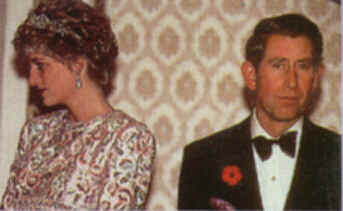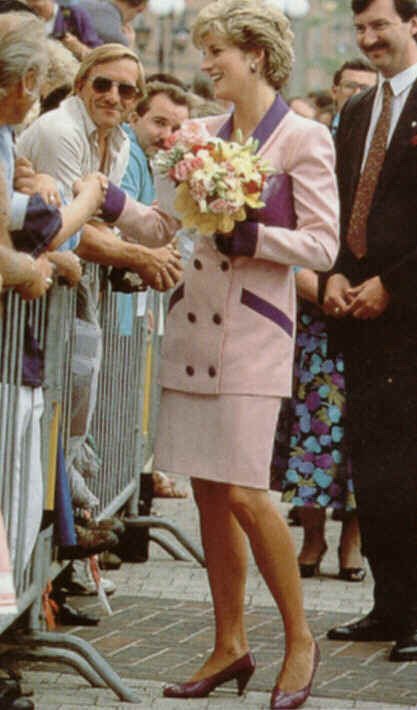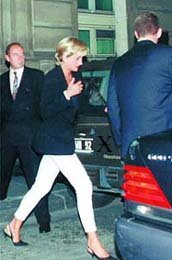Biography
Death
 In December 1992 it was announced that The Prince and
Princess of Wales had agreed to separate. The Princess based her household and
her office at Kensington Palace, while The Prince was based at St James's
Palace and continued to live at Highgrove.
In December 1992 it was announced that The Prince and
Princess of Wales had agreed to separate. The Princess based her household and
her office at Kensington Palace, while The Prince was based at St James's
Palace and continued to live at Highgrove.
In November 1995, the Princess gave a television interview during which she spoke of her unhappiness in her personal life and the pressures of her public role. The Prince and Princess were divorced on 28 August 1996.
The Prince and Princess continued to share equal responsibility for the upbringing of their children. The Princess, as the mother of Prince William (second in line to the throne), continued to be regarded as a member of the Royal family. The Queen, The Prince and The Princess of Wales agreed that the Princess was to be known after the divorce as Diana, Princess of Wales, without the style of 'Her Royal Highness' (as the Princess was given the style 'HRH' on marriage she would therefore be expected to give it up on divorce).The Princess continued to live at Kensington Palace, with her office based there.

After her separation from The Prince, the Princess continued to appear with the Royal family on major national occasions, such as the commemorations of the 50th anniversary of VE (Victory in Europe) and VJ (Victory over Japan) Days in 1995.
Following her divorce, the Princess resigned most of her charity and other patronages, and relinquished all her Service appointments with military units. The Princess remained as patron of Centrepoint (homeless charity), English National Ballet, Leprosy Mission and National Aids Trust, and as President of the Hospital for Sick Children, Great Ormond Street and of the Royal Marsden Hospital. In June 1997, the Princess attended receptions in London and New York as previews of the sale of a number of dresses and suits worn by her on official engagements, with the proceeds going to charity.The Princess spent her 36th and last birthday on 1 July 1997 attending the Tate Gallery's 100th Anniversary celebrations. Her last official engagement in Britain was on 21 July, when she visited Northwick Park Hospital, London (children's accident and emergency unit).
In the year before her death, the Princess was an active campaigner for a ban on the manufacture and use of land mines. In January 1997, she visited Angola as part of her campaign. in June, the Princess spoke at the landmines conference at the Royal Geographical Society in London, and this was followed by a visit to Washington DC in the United States on 17/18 June to promote the American Red Cross landmines campaign (separately, she also met Mother Teresa in The Bronx).The Princess's last public engagements were during her visit to Bosnia from 7 to 10 August, when she visited landmine projects in Travnic, Sarajevo and Zenezica.
It was in recognition of her charity work that representatives of the charities with which she worked during her life were invited to walk behind her coffin with her family from St James's Palace to Westminster Abbey on the day of her funeral.
